Issue Number 44, Spring 2019
Contents
- Uprising by Richard Lebovitz
- Humiliation by Christopher Locke
- My Girlfriend and Her Two Friends, A Mile Outside Yosemite by Ron Riekki
- Different Types of Disasters and Their Cures by Ron Riekki
- Dear Southern California Folks: by Diane Ray
- Budding by Rachel Rose Teferet
- Crucible by Gary Lark
- Out There Lives a Fox by Rogelio Luque-Lora
- Grubs by Natalie Tomlin
- Backyard by Natalie Tomlin
- Drawn by Michael Lyle
- Watered-Down Well-Being by Andrea Lynn
- The Keening by Linda Casebeer
- Two Grey Foxes by Lucy Griffith
- Springtime in Fengdu by Joyce Ritchie
- Sexy Time by Adam Scheffler
- Two Poems by Don Thompson
- Wearing California by Wren Tuatha
- Ode to Air by Timothy Hohn
- Learning to Live with Water by Adeline Carrie Koscher
- The Flood by Bruce Hawkins
- War Voice: Project Construction by Bruce Hawkins
- What the Tortoises Know by Lucille Lang Day
- The Mole: A Tribute by Eric Shaffer
- The Open Secret of the Sea by Eric Shaffer
- Lost and Found in I‘ao Valley by Mark Kaplon
- Failure by Mark Kaplon
- To Fall Again by Ceó Ruaírc
- The Grand Canyon by Devreaux Baker
- Redwood by Devreaux Baker
- Behaviors of White-Throated Swifts by Amy Glynn
- Chamise by Amy Glynn
- American Toad by James Johnson
- Expatriation by Teri Micco
Archives: by Issue | by Author Name
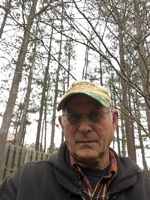
Uprising
by Richard Lebovitz
Richard lives in the Upper Chattahoochee Watershed in the Georgia Piedmont. His small backyard is a National Wildlife Federation (NWF) Certified Wildlife Habitat and Georgia Native Plant Society (GNPS) Certified Native Plant Habitat, and he participates in GNPS rescues to save native plants from the path of development.

Under streets, under structures,
the ground moves; cracks form.
Seeds infiltrate crannies and
crevices, fissures and fractures.
Shoots show, first one, then another,
the beginning of an insurrection.
Spikes rise from the trenches;
leaves flutter like banners.
By the silent utterances
of its green voice,
the grass reclaims its place on earth,
blade by blade by blade.
© Richard Lebovitz
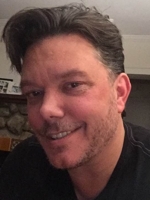
Humiliation
by Christopher Locke
Christopher lives in the Au Sable watershed in Upper Jay, New York, at the top of The Adirondack Park. During winter (which is long), turkey, deer, bobcat, coyote, and fox tracks stitch the snowy backyard into a running mosaic.

April returns, and you
find yourself lost under
mountain pine, gin-tipped
pikes shagged green and harmless.
A recitation of loneliness, lips
counting the rings of headless
old growth. God fills the clouds
with his absence, boughs
steeped above you in halting
crush, unreachable as the corn
flower sky ringing with your bargain
at forgiveness, acceptance;
the ache of a cold bloom.
© Christopher Locke
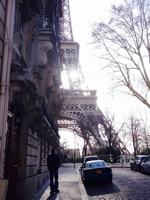
My Girlfriend and Her Two Friends, A Mile Outside Yosemite
by Ron Riekki
Ron lives in a central Florida swamp with cypress and white ibis and the occasional sand hill crane and seven-foot alligator.

My girlfriend comes home from Yosemite,
says driving there, for the first time in her life,
she saw a bear. She said it crossed the road like
a monk, as if it were Thich Nhát Hanh, looking twice
at the car with soft keyhole eyes, and its body as wide
as the stars. She said she cried for the final mile
of their drive.
© Ron Riekki

Different Types of Disasters and Their Cures
“Iconic disasters have a history of
prompting government action. Three years
after the Cuyahoga River fire of 1969,
Congress passed the Clean Water Act. Two
decades later, when the Exxon Valdez ran
aground and dumped 10.8 million gallons of
crude oil into Alaska’s Prince William Sound
[. . . Congress then] mandated double-hulled oil
tankers” -- Dan Egan,
The Death and Life of the Great Lakes
by Ron Riekki
Ron lives in a central Florida swamp with cypress and white ibis and the occasional sand hill crane and seven-foot alligator.

BP stands for British Petroleum.
It also stands for blood pressure.
Right before death, breathing shifts
from normal to rapid breaths followed
by periods of apnea, no breath. We are
there now, switching between rapidity
and nothingness. The economy breathes
like we breathe and will die when we die
and ocean will become heat waves, with
urban heat islands where there is no water.
You were tricked into electing this. For
the next election, we have to rip open history.
© Ron Riekki
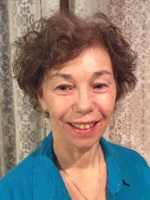
Dear Southern California Folks:
by Diane Ray
Diane is a native New Yorker living amidst pine and birch on a hill overlooking Green Lake in Seattle, the 50,000-year-old glacial lake fed by rain, storm run-off, and the Ceder and Tolt River Watersheds.

Hi there! We are the Canisters, your seventy-three new neighbors moving in just yards away from San Onofre State Beach. A photographer could capture our new digs, a child building a sand castle, and a surfer all in one frame. We’d love to have you over, but we know you wouldn’t wish to get stung by the pesky swarm of gamma and beta rays that just won’t leave us be. So that you can get to know us a little, here’s our friendly introduction: we are nuclear waste canisters from the shuttered plant at San Onofre, eighteen feet long and thin skinned, resembling giant coke cans. Each of us is chock full of pez-like pellets of uranium, one hundred thousand pounds equal to one Chernobyl accident. One by one we are being lowered into our retirement condo, a concrete vault with a ten-year warranty like swiss cheese, with a hole cut out for future leaks, but we have to go somewhere. Our new apartment is custom made out of metal-lined concrete, a trendy silo for our high level nuclear load, sunk into a fragile bluff, near an active earthquake fault, in a tsunami zone, about a hundred feet from shore, and already getting its bottom sloshed now and then, skimming an aquifer, the trifecta of water, salt, and radioactivity not your average day at the beach, but the NRC assures us there isn’t enough moisture here for concern. Corrosion shmozen!
We do have to admit it, though, since our move began at the end of January? Well, it hasn’t gone like clockwork. The fifth one of us in line to be loaded and locked showed up with a fallen off bolt used to circulate cooling helium, and we can’t be sure if the first four of us have a crucial screw loose, too, which made the local activists really mad. But they get mad a lot. A bunch of hot heads, if you ask us. All in a dither to begin with about the thickness of our 5/8” walls compared to our 10-19.75” thick-wall cousins, the Casks, used in Europe and Japan, which they claim is why we still have Tokyo, the big shot Sumo casks having remained standing sentinel throughout Fukushima. We admit it, in a perfect world, it could be better if we weren’t so shy and could be inspected and fixed like our bolder cousins if we sprung a radiation leak, but we are who we are, and we cost you so much less, it’s worth it, right? Our maker, Holtec, assures you we’ll be good neighbors. So does the NRC.
By the way, we love imagining your lives amidst all that bougainvillea and frangipani just six miles up the strand in San Clemente-- sounds like a great place, with your teens able to catch a wave en route to school, your newly arrival millennials with spiffy, high tech jobs, and all your blissed-out retirees. What humans wouldn’t wish to live here and in the fifty surrounding miles that could be affected if we,…well, let’s not go there.
Yeah, ok, it’s true, two of the welcome workers loading us nearly dropped one of us eighteen feet in August, dangling by ¼ of an inch for about an hour. So embarrassing! The utility and the NRC tried to keep it secret, but then that safety worker dude had to go blowing off his mouth: I may not have a job tomorrow for what I am about to say, but that’s fine, ‘cause I made a promise to my daughter….There were gross errors. ….That’s a bad day. And you haven’t heard about it. And that’s not right. He said this was the second such almost here, the other having happened just the month before: Public safety should be first and it is not. Behind the gate, it is not.Meanwhile, we are just trying to be good sports. That environmental engineer, the former Presidential nuclear advisor guy? Real pushy, if you ask us, getting together with colleagues at UCSD to look at the basic physics of how bad is bad. Made some wild sounding claims that we could have hit the concrete like over two sticks of dynamite, and that thousands of you humans would have had to skedaddle fast. Not that your government provides your communities any radiation monitors, emergency or evacuation plans. And besides, your President Trump just propped up that toxicologist in early October at the EPA with breaking news: A little radiation is good for you!
beyondnuclearinternational.org/2018/12/16/the-mad-plan-to-store-nuclear-waste-on-the-beach/
© Diane Ray

Budding
by Rachel Rose Teferet
Rachel lives in the Bear River Watershed, upon the banks of Wolf Creek, where she howls under full moons. She goes often to the Yuba River, where she drapes herself on sunny rocks and writes poetry and romantic comedies in the shade of the willows.

Still, in the pause
between
sleeping
dreaming
the creek whispers
half-moon lullabies
and the young buck
browses the blackberries
velvet antlers
budding with stars
© Rachel Rose Teferet
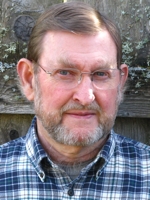
Crucible
by Gary Lark
Gary grew up on the Umpqua River and considers it his primary mentor and metaphor. He currently lives near the Rogue River in Oregon.

It is that place where we change,
ice to water, wood to flame.
It is swimming into the darkness
and meeting the salamander rising.
It is an open mouth singing.
© Gary Lark
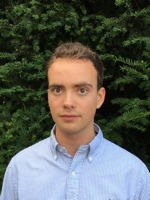
Out There Lives a Fox
by Rogelio Luque-Lora
Rogelio grew up in the Guadalquivir watershed in Spain and currently lives in the Anglian river basin in England.

For the first time since this started I woke up and I did not want to do the rest of the day. I was too aware of the relentless pangs of suffering that this would involve. It’s true that I had not looked forward to anything in months, but so far I had powered through with the momentary warmth of fleeting contentedness.
Soon I found myself walking south out of my house, not paying attention to anything in particular. On a better day I would doubtless have paused to take in the oaks in bloom. No two holm oaks bear flowers of the same colour, so that the land is painted with a plethora of shades of ochre, copper, gold – only one of each hue. When the wind blows, clouds of pollen diffuse this pattern, like water poured on aquarelle.
About a hundred and fifty yards from the house is a barn where straw bales are stored. To me the bales have always appeared to be a structural component of the building – I have never seen the back wall. As kids we would climb to the top of the stack, about six bales high, and explore the uneven surface around us. Only a few times did we venture all the way to the opposite end of the barn, where the air was dark and thick with dust.
I hopped over the fence by the barn and my feet landed on grass. It was the spring window when the grass is high enough to force you to kick a path through it, but still fresh and supple enough for this not to be unpleasant. Leaving the garden gravel and paddock mud behind invariably feels like stepping out of the premises of domestication, however different the current wood-pasture – called a dehesa – may be from the Mediterranean forest that was here before humans arrived.
The novelty of feeling grass underfoot had not yet worn off when I was quietly startled by a fox fifteen or twenty yards to my right. He was unaware of me, too occupied with finding breakfast. His face was pointed, exaggeratedly so, like a caricature in a field guide. His fur was homogeneously tawny except for the black tips of his ears; his gait silent, accurate, but not fearsome. He was confident, springy, looking well aware of the importance of the task at hand and completely confident of his ability to accomplish it.
I lifted my binoculars to my eyes as gradually as I could. With enhanced vision and unaided hearing, I entered the silent movie that is remote wildlife watching. He was hunting mice, following his instinct and stomach. And so my gaze stayed with him as he searched the shrubs and burrows in the vicinity.
I noticed my eyes searching for a collar on his neck. There was none, of course – this creature was wild. He acted according to his own will, not mine, and shunned my company, as well as that of my dogs, who wear collars as tags of their domestication.
After searching in three or four more thickets of thistle, he brought his trotting to a pause and looked up towards the house. Perhaps ten seconds elapsed and he had not moved an inch. I reckoned he was pondering what to do next. Finally he resumed his search, steering away from me. I followed, his instinct and stomach guiding me southwest, until he momentarily disappeared into a dried-up stream bed.
When he came into view again, he was trotting straight towards me. I remained baffled and still, but I should have crouched down. Predictably, he turned away as soon as he saw me, doubling his speed as he ran towards his home and away from mine, and left me filled with a muffled sense of regret for not having been quicker to react.
I trudged on, heading towards where he had escaped to, without particularly tracking him – I was not expecting to see him again. But the encounter left a lingering feeling of relief from worries that until then had been permeating each moment of my days. During the short while that the fox was nearby he monopolised my attention. My eyes tracked his every move, and my mind pondered only what he would do next.
There was no place for my usual obsessions in that mindset. The fox was utterly not me: I could not communicate any of these thoughts to him (unlike my dogs who are responsive to my mood) and in him I saw no trace of human history, nothing that my worries could relate to. I had stepped outside of domestication, but it appears that this had also given me, quite immediately, an outside view of my human concerns.
Perhaps I was predisposed to feel this way. In one of the articles that I keep going back to, psychologist and ecology writer David Kidner emphasizes the importance of knowing that there remains nature independent of humanity. In his words:
The knowledge that whatever our own personal problems, or the ineptitude, corruption, or blunder of whole societies, there is somewhere ‘out there’ a natural realm within which one can find refuge, renewal and certainty, is a fundamental source of security.
Kidner elaborates this idea by drawing upon anthropological work by Tim Ingold and Robert Williamson, who suggest that in many indigenous societies, one’s life is profoundly located within natural processes and places. Williamson explains that for the Inuit the most restorative factor is the habitat. He tells the tale of a young hunter who, upon hearing news of the death of his wife and the removal of his children, drove a borrowed dog team into the wild, on his own, for two days and two sleepless nights. As they watched him disappear into the distance, everyone understood his reaction. Unlike the bereaved Inuit, I did not set out with the formed intention of escaping the environment in which my psychological ailments brewed. But the restorative effects were there all the same.
Stories and accounts of grief-stricken people escaping to the wild also exist in multifarious forms in Western cultures (see, for example, chapter 24 in Helen Macdonald’s H is for Hawk). And the need for the knowledge that there are wild creatures and places ‘out there’ outside of society’s influence appears to be shared by many in industrialized societies. For instance, in The End of Nature, Bill McKibben explains how plans from oil companies wanting to drill in the Arctic National Wildlife Refuge, on the northern coast of Alaska, caused sectors of the American public to speak up against them despite the fact that the refuge was at the time only visited by a few hundred people each year. This case also suggests that some of the sense of security derived from the existence of pristine nature extends far beyond the wild places themselves.
In McKibben’s book the idea that many of us need a sense of independence in nature is part of the overall lament for the loss of this independence. The text’s main theme is that, since the advent of fossil fuels, humanity’s impact on Earth has left no unaltered nature. McKibben is among the many environmentalists who claim that the effects of climate change have altered every inch of the world: ocean currents, the duration of each season, the frequency and intensity of storms.
I am glad I found independence and self-will in a landscape that has been farmed for millennia. Like many others, I hope that I can escape future struggles by being in the presence of animals who do not live according to our schemes and concerns, whose impulses are not controlled by ours. As I walked back towards the house, I thanked my cows for keeping the forest open enough for my encounter to have taken place and for allowing the wild to infiltrate a land which I no longer felt I could call mine.
© Rogelio Luque-Lora
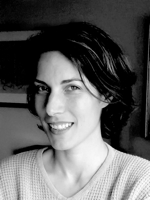
Grubs
by Natalie Tomlin
Natalie lives in the Grand River watershed in Grand Rapids, Michigan.

Later, I couldn't stop thinking about the skunk's claws digging, piercing all of that lustrous wriggling. I couldn't stop thinking of moonlight, blindness. But first I had to awaken to my drawers rifled through, to my yard dotted with shallow, marble-shaped holes. Cut a square in the earth. If the grass pulls out, as useless as a square of carpet, you know they're around. I sprinkle pellets and with the hose, bathe the lawn and the pearls nestled there. The package tells me, keep children off grass for 48 hours. It’s the day lilacs swell over the fence. First muttering in judgment, by mid-afternoon, they slide perfumed forgiveness through the air.
© Natalie Tomlin

Backyard
by Natalie Tomlin
Natalie lives in the Grand River watershed in Grand Rapids, Michigan.

South Pacific clownfish unsheathed pink razors
and anemones flared life into toothbrushes
until the scrubbing arms of coral elbowed her awake.
On her island, she had staged
a reef around her boy, especially
for Spring: grass-green slide, a worm on wheels,
shovels that now raced across lawn
like fins, ready to burst into
a festoon of shards. She asked
the ticks, plastered into
unseasonably warm air:
who will toss our
indestructible confetti
when we are gone?
© Natalie Tomlin
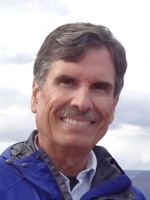
Drawn
by Michael Lyle
Michael lives in the North Fork Goose Creek watershed near the Blue Ridge Mountains of Virginia.

the mother rabbit’s fur
is smooth beneath my hand
her kits gathered
in the nest under the forsythia
we have watched each other for weeks
discerning intent
a searching of hearts
it has come to this
like the first taking of a lover’s hand
she hops slowly
to where I sit
in the back yard
surrounded by fading light
feral sacrament
of warmth and bone
Previously published in an earlier version in the author’s collection, The Everywhere of Light (2018)
© Michael Lyle
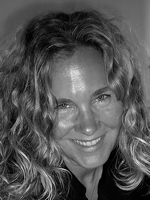
Watered-Down Well-Being
by Andrea Lynn
Andrea lives on the doorstep of The Everglades near one of the world’s largest mangrove systems. The expanse protects an abundance of threatened species, and its estuarine complex is the largest breeding ground in the world to the most endangered sea turtle, the Kemp's Ridley.

I glance down at my purple toe, the one I dropped my full water bottle on two days ago, hoping for a second the minor injury is the reason I’m not OK. The decay-tinged air clogs my nostrils—sinuses swell immediately. The burning sensation is settling into the center of my lungs. Maybe I’m sensitive to the air quality in a placebo sort of way because of my father’s fatal affliction—non-small cell lung cancer.
My community boasts the highest well-being in America on the Gallup-Sharecare Well-Being Index, but I don’t feel very well. My bare feet are on course to meet the soft, thick, dry sand that outlines the Gulf of Mexico in 300 yards, but even in my groggy, half-awake state I can picture the scene; the one that should welcome me isn’t here today.
The beach is deserted except for two county employees tending to their regular early morning tasks and the old man with spry eyes who feeds the mourning doves daily no matter the weather, as the squirrel with the scrawny tail climbs the bench to sit on his lap. My running partner joins me at our designated spot, near the shower towers, so we can dig our feet into the whitish sand, chugging barefoot through the thick grains. When the Gulf is well, dolphins entertain us as we run. Seeking breakfast they glide, arc, and dive in the smooth water that shimmers transparent blue in morning twilight.
To a backdrop of opaque, reddish-brown ocean and dead sea creatures tracing the tide line, Thomas and I set off in our usual direction. The stinging that causes my eyes to fill with tears blurs the big mound until we’re a few yards closer.
She rests silently on her belly—fixed, wide-open eyes stare at us and powerful flippers still reach for the sea. Although sea turtles generally have the capacity to detect and avoid the harmful algal blooms, something went wrong for this young turtle. Were her lungs weak like mine? I shake my head to clear the haunting story my parents told me from my mind—my pathetic lungs—the outcome of an unfortunate birth. Coupled with the fear of what lives in my DNA waiting to mutate my lung cells, it’s a lot to worry about, especially as a runner taking in red tide-laden sea air.
The county biologist charged with the safekeeping of this stretch of beach for the turtles steps out of his all-terrain vehicle with its lights flashing. He leans in close to the juvenile. “It was a Ridley,” he says as he places marks on one of the turtle shapes on the paper secured to his clipboard. The Kemp's Ridley—the most endangered sea turtle species in the world—lost another member of its tiny population today. “It was the tide that got her,” the biologist’s posture is stoic, but his eyes are soft, his voice gentle. “There are no marks indicating a boat collision, and during bad red tide years like this one it’s usually the tide that gets them,” he explains. Red tide season is typically over in April; this year the bloom is colliding with sea turtle nesting season. Thomas reaches over and touches my shoulder reassuringly, encouraging me to leave the sad scene.
Pulling air in through my mouth feels like drawing in hot embers; Thomas and I talk about the burning in our noses as we reach our three-mile marker, the condo building that took the place of the old snag that was home to the largest osprey nest for miles nestled within a stand of mangroves; we’ve never figured out how the building was granted its permits. The poor air quality combined with the unusually high temperatures the region has been experiencing—the heat stoking the fires in the Everglades—makes my mind fuzzy and I trip on a blue plastic pail caught in the thick brown seaweed brought in by the strong onshore winds that churn the red tide toxins into the sea mist. Plastic remains are as treacherous as red tide for the tiny turtle hatchlings who emerge from their nests in the middle of the night with moonbeams as their guides. We pause to pitch the pail, its companion shovel, and a nearby plastic grocery bag and water bottle. Trash bins are ample on our beaches. “Beachgoers should learn the pact hikers adhere to,” Thomas scowls as he picks up another plastic bottle. “Don’t they know to pack out what they pack in? You know, leave no trace?” Thousands of tourists visit our beach town each month, and thousands more cram into town during the cold winter months that drop snow and ice on their northern states. They live here part-time—in a distant sort of a way. They call themselves snowbirds; locals often have other, less affectionate labels for the part-timers. I am glad for the economic boost tourists and part-time visitors bring, but I wonder how you love a place when you already have a departure date logged upon arrival.
The helicopter that appears overhead muffles our conversation and drowns out the screeching of the dredging equipment situated just offshore, sucking sand from the bottom of the pass to replace what Hurricane Irma reapportioned last summer. One of the mosquito control district’s helicopters, flying the coastline at about four stories above our heads—easy to measure as we pass by and count to the fourth floor of the resort’s main tower—is dispersing Bti larvicide around the area to eradicate mosquito larvae. I received the district’s notification text about the application last night; both Thomas and I are signed up for the alerts—we try to avoid running in the area when they’re spraying even though those who produce Bti are quick to point out that its use is safe for humans and animals, although recent studies have demonstrated potentially serious concerns for amphibians, and maybe humans. I shiver involuntarily; our mosquito control district was recently accused of mixing and application violations by the Florida Department of Agriculture.
We cross our make-believe finish line just before the boardwalk. When the ocean is free of red tide we glide in about two feet to soak the magnesium into our bodies; it’s the best cooldown. Today we stay behind the line of carcasses.
One of the county employees has removed his deafening backpack—the gasoline-powered Stihl blower he uses to rid the walkways of sand—and I think about my corn broom at home. He is shaping and trimming the vegetation that lines the boardwalk. Not wearing hearing protection and still searching for good air Thomas and I decide it’s time to leave the death-scented sand today. I press my palms over my ears to reduce the hedge trimmer’s decibels as we walk up the boardwalk and away from the ocean. What will happen when Florida red tide meets the toxic blue-green algal blooms flowing into rivers, canals and estuaries from the polluted waters being released out of Lake Okeechobee?
I look back just once, over the manicured hedge and into the filthy, oxygen-starved water, almost stepping on a poisonous, invasive cane toad lounging in the shadows. His species was brought to Florida in the 1930s to control pests in sugar cane fields, the same timeframe within which Herbert Hoover Dike was built around the more than 700 square miles of Lake Okeechobee in an attempt to protect lives and land in the rapidly developing state.
Maintaining well-being here is becoming difficult, even if I watch my step.
© Andrea Lynn

The Keening
by Linda Casebeer
For the past twenty-five years, Linda has lived under a canopy of 100-year-old trees in the Cahaba River Watershed near the end of what-many-consider the oldest mountains in the world.

As if someone had been lost
the sound mournful and low
from a human it seemed at first
though the source was unclear
several yards touching ours
turned up empty no moans
from injured individuals
so where was it coming from
downtown a railyard whistle
familiar and daily but not
so what a creature’s paw
caught in a trap or a tomcat
caterwauling not in daylight
a cote a bevy a dole a dule
a flight so many names
for a group of mourning doves
but none feeding on the ground
only a drab female cardinal
pecking around the hulls
of spent sunflower seeds
as the silence lengthened
I returned inside to the table
to pour over a box of half pastels
sixty colors Rembrandt’s
general selection for that day’s
lesson in abstraction earlier
Ed had finished his piece
so I was alone as the low wail
began again and I found
myself opening the back door
once more to stand still
and focus on a large dead bough
© Linda Casebeer
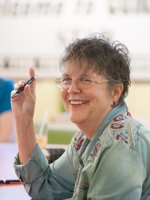
Two Grey Foxes
by Lucy Griffith
Tucked within the Edwards Plateau, on a songbird flyway, Lucy sleeps 100 feet above the Guadalupe River on a ranch: home to bobcat, fox, turkey, armadillo.

Both of us crave the crepuscular—
that crack in time at the edge of dawn.
We emerge from our foxholes.
Yours, carpeted with dry leaves,
the scent of your kits. Mine, a nest of
down, fragrant with soap.
You trot your route, reading the morning
with your nose. I wander mine, listening
for woodpeckers tapping their drums.
Our trails cross. You crouch, stare,
your ruff glazed with gold, backlit by sunrise.
So close, I watch you smell me.
A deep breath, you breathe me in again.
My breath joins yours, swells, falls in rhythm.
I jump the track of my life—into your slim body.
You into mine.
You take on my day, return to the den for
another cup of coffee window-side.
I step on your path, leap,
weightless
into the brush.
© Lucy Griffith

Springtime in Fengdu
by Joyce Ritchie
A Midwest transplant to the coastal Mid-Atlantic Chesapeake Bay watershed, Joyce grew up in a small town carved out by the confluence of two rivers. This poem grew out of a boat trip down a river half a world away.

I Passing Down
In Fengdu the mothers and fathers tell
stories to their children over dinner,
rice, sweet potatoes roasting on the
cooking fire fill the hut with smokey warmth.
In their children’s eyes they see generations,
the deep pool of wuji, infinite nothingness
from which grew yin and yang, unity of
existence, eternal interacting
female/male
moon/sun
dead/alive
grave/house
How to tell the children that tomorrow
for the last time they will sweep ancestral
graves soon to be lost, like this house, to the
river’s rising? How to tell the children
every day now is a story to hold
in bone and heart against the rising river?
II Veneration/Supplication
Remember this, children, in bone and heart,
how today we swept the ancestor’s graves
of the detritus of the year, how we left
small offerings for the favorable emerging
from dark yin winter to spring’s yang light.
Remember how you gathered bouquets of
gold mother chrysanthemum, blossoms
from the White Dove tree. Remember
our words to the dead: Thank you for your
sacrifices which give us such bounty,
health, long life. Forgive us this sacrifice
of the chi harmony wind water feng shui
that we planned with care for you. May you rest
gently cradled by ancient Mother River.
III A Father’s Lament
Each day he watches Mother River rising,
lapping at the fields and the little hut.
Each day the river gorge reverberates with
the ring of metal on metal, a new road
being carved from sheer granite, rhythmic
marking of the river’s inexorable rise.
Each day he carries a piece of their life
on his back up a switch-back path to high ground.
He doesn’t know to call it what it is.
What he knows is the feeling of dry dirt
crumbling between his fingers, scattering
down the mountain baked dry by beating sun,
his hand bereft of the heft and promise of
moist earth made fertile by ancient river silt.
IV Boatman’s Song
Each day the river rises faster,
past the 25 meter marker, the 75,
soon the 150. White Crane Mountain
no longer soars so high over his little boat
floating slowly now on sluggish currents,
nets dragging empty. In the thirst of noonday
sun, he cups hand-to-mouth, bitter salt stings
his tongue. Ancient Mother River could not know
she would be dammed, nor the insects whose
wet wings betray them, nor the fish circling
windows and walls of submerged cities, searching
for familiar tributaries lost to the depths,
nor the Siberian Crane seeking shallows
succumbed to the rising river. In the distance,
the Golden Swallow sings its unanswered song
from higher and higher branches.
© Joyce Ritchie

Sexy Time
by Adam Scheffler
Adam lives near Massachusetts Bay, a half mile north of the Charles River.

Listen, I don’t need the 16 headed
hive-vision of CNN to know that
death is under the tablecloth –
or that it’s driving the human beings
to invent delicious poisons and slap
each other like puppets.
Today the newspaper just told me two
black holes merged “resulting in a pit
of infinitely deep darkness
weighing as much as 49 suns”
as if that were comprehensible,
as if exhausted, each thought bulldozed
by the nightshift, we hadn’t dug that pit ourselves –
but I love how we say fuck like bunnies,
how innocent dopey fluffballs
are better at sex than we are;
I love the unknowable weirdness
of aardvark’s lust for each other.
Look, I too sometimes feel like chirpy
circus music that’s been playing
a long time after the dopey jack
has sprung from his box, bobbing
his head horribly on his rusty string,
but sometimes your Catholic friend
tells you sex is really only ‘bestial rutting’
and you smile at him and say
“only if you’re doing it right.”
© Adam Scheffler

Two Poems
by Don Thompson
Don lives in the Kern River Watershed at the edge of the flood plain--only a couple of feet deep if Isabella Dam collapses. Meanwhile it's some of the best ag land on earth where the Yokut once flourished in the wetlands.

Late April
This breeze has bad mojo, malice.
A hiss under its breath warns of ill winds to come.
This is spring. It ought to be anodyne;
Instead, it gives new leaves the jitters.
*
Inauspicious Morning
Thin, dingy clouds smear the sunlight,
Turn greens morose, subdue white
Almost to ecru. Muffled,
Birdsong sounds like it’s been phoned in.
**
© Don Thompson
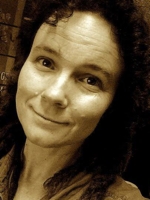
Wearing California
by Wren Tuatha
Wren Tuatha is a climate refugee, having escaped the ongoing fires of California for the Cayuga watershed of the New York Finger Lakes.

Comes the rainy season in drought times
and Tonka the Akbash is wearing California.
The red pine dirt, tempera paint, would
wash to white if you could catch him.
In spring the hose water will be warm
and Tonka will be coaxed. Thin, woken
bears will show up behind the manzanitas.
Experts will measure water levels.
Neighbors will jaw on whether
the snowcap was enough, brown yard
against green one, watered on the sly.
A shopkeeper’s spraying homeless off her stoop.
NorCal folks roll tremors of resentment
as water is syphoned down slope to L.A.,
hot tubs or desert farming, blame sprawl,
blame other. And Nestle trucks roll east.
First published in The Birds We Piled Loosely.
© Wren Tuatha
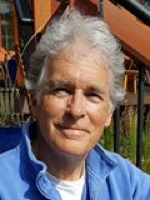
Ode to Air
by Timothy Hohn
Tim does most of his reading, writing, and reflection on a sunny aerie overlooking the entrance to East Sound on Orcas Island, Washington.

Standing on a dock, my son Sam and I are looking over the railing at fish lolling back and forth in a gentle current. We engage in a humorous muse over the prospect of the fish noticing us just as we are noticing them. We think: there they are, so calmly immersed in water, breathing the fluid without difficulty or concern. They may be looking at us and marveling over our exposure in the air, breathing it without apparent difficulty or concern. One of the perceptual differences that adds to our interest in the fish (and other aquatic life) breathing the water is that you can see it; it obviously has greater density, texture, and viscosity than the air. The notion of letting something so tangible in with a breath—something we’ve all done unintentionally with disturbing results—seems so alien! We laugh about the notion of the fish having similar thoughts about our apparently breathing and living in an invisible nothing. Of course, we both have need of the same life-giving element: oxygen.
We do take the air and the atmosphere for granted. However, I’m very aware of it in spring as a vector for tree pollen to my sensitive nose and eyes as well as the welcome carrier of rich organic spring smells of a warming and awakening land. It’s that relative invisibility that renders the atmosphere absent in our everyday thoughts and awareness, despite the fact that it has the most ubiquitous presence of the Earth’s vital elements— we’re surrounded and enveloped by it! My attention is abruptly focused on air when it is ripe with wonderful fragrances, carries aloft beautiful birds, ruffles my hair with a caressing breeze, or flexes its muscles with a stiff wind that activates the trees. I marvel over the substance of air and the force of the atmosphere when it lifts me off a runway in an unimaginably heavy airplane, each time thinking it might not go up, and then it does!
Air; such a quandary to our senses, at times undetectable and yet always fully present; we’re totally submerged in air! And that’s not all: it’s inside us nearly as much as it is outside, moving through our nose, our mouth, our ears, and our eyes. It seeps through all of our pores, and a good thing, too, for we’re completely dependent upon air. We need to draw it in through our nostrils and nasal cavities, over our tongues and tonsils, to funnel down our tracheas and oxygenate the capillaries in our lungs (I suspect you’re very aware of it at this moment!) You might say--considering the air we breathe, all the absorbed oxygen moving through our blood stream and permeating our cells, and whatever amount just happens to seep into us--that we are largely made up of air! Well-known scientist David Suzuki notes, "air embraces us so intimately that it is hard to say where we leave off and air begins.” Further, in his wonderful lecture, A Force of Nature, he makes the point, “…if you are air and I am air, then I am you, and you are me.”
Astronomer Harlow Shapley, in a profound thought experiment, noted that air is one percent argon. Shapley figured out that a single breath contains about 3 x 10 to the 19th power of argon atoms. That’s 30,000,000,000,000,000,000 atoms. Argon is an inert gas and we breathe it in without absorbing it. That means the argon atoms you exhale are available for others to breathe in without change. Shapley calculated that in a year, those atoms will have circulated around the Earth and that you will likely breathe in 15 of them again! Because of the unchanging nature of argon, Shapley goes on to speculate that it’s possible that with any given breath you will be taking in argon that Gandhi breathed, or atoms that were expelled during the Last Supper, and others that were shared by dinosaurs, saber-toothed tigers, and whales! David Suzuki, building on the notion that the atmosphere connects us all, says that air is, “…a matrix that joins all life together,” past, present, and future. Indigenous cultures teach that we inhale our ancestors and exhale into our children. To them, air is a sacred element of the Earth.
Terrestrial organisms must take in air to live! But where is it? Its invisibility and general lack of perceived presence make it absent from our attention and overlooked as the most omnipresent characteristic of our environment. But, for us, it generally exists in obscurity, unattended by any human concerns even as it drifts in and out of our bodies and connects all living organisms. The oxygen the trees are passively breathing out, we have to breathe in along with all the other animals. And the carbon dioxide we are breathing out, the plants are breathing in to meet their needs. The air, in its essential invisibility, must be considered a vital element of the Earth; the intangible substance that brings life to the land and its precious constituent, oxygen, to the sea.
Our disinterest, inattention, taking for granted, daily forgetting, about air, might be construed as a subtle but significant loss of awareness—evidence of the separation of ourselves from the vital attributes and life-giving aspects of the natural environment. We’re often looking out, in a solipsistic way, at a completely external nature as a purely interior observer, more engaged with our human dramas and constructs than with vital aspects of the living Earth. Although we are continuously breathing it, we fail to notice that the air is there, our atmospheric substrate of life and seamless connection to the world.
Ahh, not to be cut off,
Not through the slightest partition
Shut out from the law of the stars.
The inner—what is it?
If not intensified sky,
Hurled through with birds and deep
With the winds of homecoming.
Rainer Maria Rilke
**
© Timothy Hohn
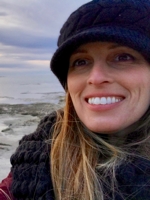
Learning to Live with Water
by Adeline Carrie Koscher
Carrie lives in the Cape Cod Watershed on Seymour Pond where, in the winter months, there are more turkeys in her neighborhood than people.

Spring finds last year’s fire road
winter-crumpled into the ocean.
On the radio,
the geology professor says:
we can have buildings or
we can have beaches; we cannot have both.
I walk to the cliff-edge – crane
over the ocean’s bitemark,
to see the scar –
I measure, how much, how far,
but cannot fathom what is gone.
A flight of swallows swoops and dances
in the space that was sand.
I want it back:
yesterday, the fire road; I want
sunsets and seals; I want
wild lilies in the woods; I want
to walk along the precipice,
to balance on the edge
of earth and sea, now
and then; I want to hold –
in the cup of my mouth –
the sun and the moon and the summer
and my breath forever, but
the ocean has other plans.
Protecting the seashore has left
a dynamic coastline, the professor says.
I bring you to see: the scrub pine torn
from the edge, tossed into the sand
like a bone sucked clean of flesh,
a fishbone or a wishbone – snapped
between two hands – which one is lucky?
In their natural state,
dunes and shorelines come and go.
The professor says, the shoreline
is supposed to change, erode, evolve.
That very shoreline – the one that attracted us –
must vanish in order to exist.
We have two choices: he says,
let the water in or try to keep it out.
We are drawn to magenta cloud, jet sea;
moontide and riptide transform us,
reshape us. We cling to a shoreline
crumbling in our hands.
Learning to live with water,
there is a dawning.
Everything, everything is ephemeral –
everything closes, empties, evaporates.
Laughter fades into silence.
Light into darkness.
Even darkness, given time,
disappears.
© Adeline Carrie Koscher

The Flood
by Bruce Hawkins
Bruce lives between the Cerrito Creek and Baxter Creek watersheds near the eastern shore of San Francisco Bay.

The flood is a beast that grows
by always seeking the lowest levels,
carrying those lowest levels
to higher and higher ground.
After the waters of a flood recede
the fields have a strange look
of electrocution, of words
with no meaning for us, that
sit in books like burned out flashbulbs.
Analogy snaps, the fields recover,
are often stronger for the silt they have received,
while the words continue to accumulate:
deadnesses, clichés, unusable areas.
When the waters receded from my uncle’s farm
there were steelhead in the front yard;
a big one, caught in the branches of the holly,
fell like a bloated, silvery fruit
near the front porch. The children
carried it back to the river;
nobody bothered to stop them.
They threw it in and watched it float.
© Bruce Hawkins

War Voice: Project Construction
by Bruce Hawkins
Bruce lives between the Cerrito Creek and Baxter Creek watersheds near the eastern shore of San Francisco Bay.

Through this maze of skeletal, slapped-up houses
runs a ribbon of sidewalk laid out this morning,
a gleaming wetness, a smell still bakery fresh,
an orphic door just now shut, reverberating, wrong.
Red wing blackbirds skim a field
where already the blocks have been surveyed,
where next week the bulldozers begin,
where next month the wives of soldiers will move in.
I smell the quick, vanishing protest of broken stalks,
I watch the look of a newly formed “O,”
the one round lip whitening with sap.
Giving way and giving way to man’s designs
the green world survives by horrible acquiescence,
and with elegant vanishing ink
each blackbird’s low flight inscribes the tangled manuscript.
Because there is no sound in this, the hammering
drone of cargo planes does not exist.
How can you fight this thistle and milkweed, soldier,
this stuff which fucks the very air around you,
which opens for the wind
and flaunts it in your face,
sends guards on duty into spasms of sneezing?
Bulldoze the whole patch out,
burn the dried-up piles of spindly dead
and watch your new sidewalks, how soon the first
cracks come.
© Bruce Hawkins
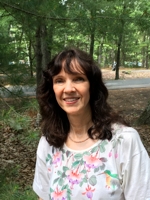
What the Tortoises Know
Galápagos Islands
by Lucille Lang Day
Lucy lives in the San Francisco Bay Delta Watershed, which covers more than 75,000 square miles. Her particular corner of this vast watershed is the watershed of Pleasant Valley Creek, which unfortunately now runs mostly under Grand Avenue in Oakland.

On Genovesa, as my husband lay
on the beach of Darwin Bay,
a sea lion came to sniff his toes
and a red-footed booby, sitting
with her chick in a mangrove
nearby, let me get kissing-close.
On North Seymour, the frigate birds
weren’t phased by me, and a young
blue-footed booby was intrigued
by my walking stick. On Española,
the sand was so thick with iguanas,
it was hard not to step on them.
The guide explained that the animals
here don’t fear us, hawks and short-
eared owls being the only predators
evolution has bred them to know.
They first saw humans with guns
and bows just five hundred years ago.
But giant tortoises, who live to be one
hundred fifty years old, have seen
how we kill to make boxes and combs,
so heads and legs withdraw into shells
at the sound of a loud voice and
they grow still as clean-picked bones.
© Lucille Lang Day

The Mole: A Tribute
by Eric Shaffer
Eric lives on the windward side of the mokupuni (island) of O‘ahu in the Ko‘olaupoko moku (district) of the Kailua ahupua‘a (watershed) near the Kawainui Marsh and within Ko‘olau Crater, the remains of a caldera whose seaward wall collapsed nearly two million years ago, providing easy access to more than two thousand miles of ocean.

after Ursula K. Le Guin
The mole is in love with the earth. No, she loves dirt,
the honest clods and pebbles crumbling in the soft,
pink spades of her lightless hands. She is blind to all
that blazes above the grasses waving in a far wind
she’s known less than she would love. Below sod and soil,
her world is warm beneath winter, cool under summer.
The mole bores through sediment and ore, leaves tunnels
studded with gems that may never see light. She presses
everlasting night aside with her nose, the scents of dirt
and darkness always before her. She nuzzles roots
dangling from the roof, and she skirts stone and spring,
shaping an underworld where she is sovereign. The mole
is totem to none but hermits, astronauts, and the daughters
of anthropologists. She is cousin to the bear, thrice removed,
yet not: the bear sleeps in the earth through cold and snow;
the mole abides within, a stout heart beating a dusky path
few know, few go, and fewer follow. Buried, alive,
she burrows beneath a world others see as solid, looking
only up. The mole mines the sphere below the horizon,
traveling through the dark, her back bent to the work.
The earth bows, and the sky bends above her passage.
© Eric Shaffer

The Open Secret of the Sea
by Eric Shaffer
Eric lives on the windward side of the mokupuni (island) of O‘ahu in the Ko‘olaupoko moku (district) of the Kailua ahupua‘a (watershed) near the Kawainui Marsh and within Ko‘olau Crater, the remains of a caldera whose seaward wall collapsed nearly two million years ago, providing easy access to more than two thousand miles of ocean.
He uli na ka he‘e puloa.
The octopus is the open secret of the sea. Day is the darkness
in which he hides, and when I read the reef, floating above
with sun at my back, he watches with an eye I cannot see.
The octopus stands atop the coral outcrop, silent, still,
an innocuous knot invisible in the web of hues shifting
below the surface. With rainbows hidden in his skin, the octopus
takes the tint of the current, blends with coral and sand spangled
in sunlight among the black and gold, scarlet and turquoise
of flickering fish. Shaped by the sea, his is the soft body
and tough skin of the impermanent that tides and current prove
on the shore. Eight-armed and articulate, he is a compass flower
sauntering the surface below the surface,
yet with measureless ocean to explore and one sole year,
the octopus seeks a cave with a door the size of a shark's eye
and slides his rubbery bulk through crevices smaller than he,
rounding corners no others turn. As clever as a child of Maui,
the octopus reveals the wisdom of concealment. He fades
into the ultramarine, and only a lure contrived of cowry shell
and hidden hook draws him from his den, yet curious and clever,
he avoids the fate of becoming board or bait, understanding the hunter
is always, as well, the hunted. Even caught, landed, and stowed,
the octopus escapes, as one limber limb slips
from within his prison to twist a latch or lift a lid for a sudden slide
through the scuppers to the sea. Solitary seeker
beneath the waves, the octopus assumes the character of light,
seen yet not seen, and teaches the craft and cunning of night,
for in long, utterly lightless nights under the ocean, he distills
that darkness into the ink which is his fame and his flight.
Sought and spied hiding in the light, the octopus
disappears in the drifting cloud of his own shadow.

He uli na ka he‘e puloa means “ink from the long-headed octopus.” In ‘Olelo No‘eau, her collection of traditional Hawaiian proverbs, Mary Kawena Pukui notes that these words are spoken “of a person clever at getting away with mischief. The ink of the octopus is its camouflage.”
© Eric Shaffer
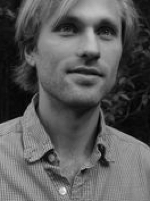
Lost and Found in I‘ao Valley
by Mark Kaplon
Mark lives on the Hamakua Coast of Hawai‘i Island, nearby Waipi‘o Valley in the shadow of Mauna a Wakea.

Getting lost
the narrow foot-
trail snaking
in and out
of I’ao stream to the back
of I’ao valley
I crossed
over moss and thickets
when sinuous
waters sped
in the diminishing dusk
a hard load
strained my breathing
rushing blood
pained my ears
when I set my pack
on a warm brown patch I'd found
just ahead though the way
was wrapped in a tone-
from-behind
that shone
almost like a sound
I couldn't keep up
and found myself standing
in the floating hand
of a citrus grove
a long time abandoned
with one hung fruit
incandescent in the dusk
and sat down to eat
in the grove right
where my hands found me
© Mark Kaplon

Failure
by Mark Kaplon
Mark lives on the Hamakua Coast of Hawai‘i Island, nearby Waipi‘o Valley in the shadow of Mauna a Wakea.

when providence and death and further instructions
finally are forgotten from your senses
when miles are to go, the stones begin to glow,
and you’ve for sustenance only breath
when finally exposure takes you, naked and exhaling,
and knowing is a feeling almost physical
listen… the whole world is speaking— can you hear
those trees, these stones, the sun’s light, the quiet?
© Mark Kaplon

To Fall Again
by Ceó Ruaírc
Ceó lives along the shores of Discovery Passage, British Columbia, where unnamed creeks meander through rainforest down to the Pacific Ocean. Bald Eagles nest nearby, as do Belted Kingfishers, Pileated Woodpeckers, and Northern Pygmy Owls. A great diversity of wild neighbours includes Cougar and Black Bear, Roosevelt Elk, Humpback Whales, Pacific Tree Frogs and Rough-skinned Newts.

Sentimental to say how much this land
is part of me, nourished, a wisdom
a balance of burgeoning growth
with just the right amount of decay
where carcass of Deer beyond stench
of death becomes a calcified sculpture
blade and curve amid Oxeye Daisies
barely a trace of what has come before
what we hope will come again
sentimental I know to mention
pathways lined with Cottonwoods so old
I could crawl onto their limbs, become drunk
in their resinous fragrance
were they not so very fragile
on the brink of falling
how I have already fallen for these wild storms
with their dancing trees, uncertain skies
Kingfisher’s rapid-fire call and the sweet
sweet song of Pacific Wren
how else to say how shocked to hear
destruction approach the place you spend
your bright and numbered days?
how machinery sound of screech and groan
raises up a terror of Ravens, a thunder of Elk!
what words can tell this violence
to the soul of the world and how
how to remain sane?
© Ceó Ruaírc
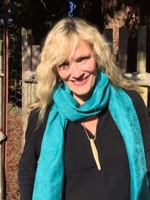
The Grand Canyon
by Devreaux Baker
Devreaux lives on the coast of the Pacific Ocean in the Big River Watershed.

I have been sitting here for over six million years
turning from ocean into the mind of magma
with the thrust and pull of continental shelves
defining my body. I am filled now
with the sound of a dying river at my core
and a million cracks of lightning
carving out my features.
Humans persist in climbing into my bones
pitching tents in the caverns of my mind
making love in the wide open spaces of my arms
or trying to resuscitate dying marriages
in the pelvic purse of my lap.
They traverse my body during the day
but at night while they sleep I wrap my force
like a shawl of rainbow dreams around their forms
and whisper the names of trails they define me by
so I become their Bright Angel or their Hermit.
In those moments I want to hold them so close
they share my infinite solitude
and learn how to mold their bodies
into the shape of loss, so they understand
how our world is diminishing
and my abyss becoming a benediction
to the memory of water.
They come and go through the gravity of time
as fragments of supernova
shadow-dancing for a brief moment
against my walls
leaving reminders of themselves
in the cast-off objects of their lives.
Filled with their voices, I endure
long after their rafts disappear
down the veins of my body.
Listen, can you hear eagle wings opening
in the margins of my dreaming mind?
Previously published in the author's collection, Hungry Ghosts, 2018
© Devreaux Baker

Redwood
by Devreaux Baker
Devreaux lives on the coast of the Pacific Ocean in the Big River Watershed.

Patient is a word they have perfected
standing silent until
wind from the north urges small
moans out of their throats and so
they sway and sing. Sometimes
in storms they mimic whale song
that rises from the coastal fog
to drift in and out of our dreams.
What is holy, if not a redwood,
color of sunrise and sunset,
color of old flames filled with ghosts
of ancestors. Their lives are strung out
like prayer beads shuffled between
the mossy fingers of some thousand
year old forest monk. They stand in groves
surrounding the remains of ancient ones
cut down years ago. They rise straight up
out of the lap of a mother
or father tree, they push past
bark beetles and squirrels
hungry for the taste of new seedlings.
They are survivors from the years
of saw blades, spiked boots,
lumber barons,
fires, storms, droughts and floods
filled with that desire
that lives only in trees,
to rise up, touch heaven
break open green bristles in sky,
breathe in and out,
sharing their breath
with the rest of us
left on the ground
below.
Previously published in the author's collection, Hungry Ghosts, 2018
© Devreaux Baker

Behaviors of White-Throated Swifts
by Amy Glynn
Amy grew up in a valley between Las Trampas Ridge and Mount Diablo in the Walnut Creek watershed.

1. Chase without Contact
Sure, you can call me
Fast if it makes you feel
Better. Say it
As if it were a bad thing, as if
It weren’t part
Of the attraction.
It’s all right. Thrill
And insult live cheek by jowl
In this field. No ill-will,
No hard feelings. In these urban canyons’ Relentless
gray,
Even a black and white bird stands Out as a
slash of color, and the color
Is speed, is swiftness.
You can call me what you like, look at the dashing
Figure I cut across these rooftops, call me
Metonymic; mimic
Me. Call me mimetic, call
Me trouble, call me what
You call what’s just beyond your reach, your fleet
Wings’ each beat – keep calling Across the
shrilling sky. I’m willing to listen.
Call me fast
And never stop calling.
Follow me, we are
Born for this, all-supple, all
Subtle, supremely responsive, rising
Into mist, into a metaphyisics only we
Can understand, alas, Alacrity, but
how
Can you miss me
If I never go away?
2. Screaming Party
Odd birds. Nobody knows precisely why
We do these things. We only know that there Are
impulses, and there are rules. We fly
In flocks, big ones, a thousand sometimes, air
Made solid, air made feathered, air made noise,
Made boisterous laughter. Slowing down is not An
option. Yet one certainly enjoys
This fractal billowing, the social knot;
One’s lifted up by kinship. Foraging
Alone is not enough. A critical mass
Of aeronauts, of extroverts, we sing
Badly, but with exuberance, a brass
Ensemble with one mind and infinite
Voices. The sky is vast. We speak for it.
3. Chase with Contact
Think fast. Think, think. Think speed, think elegant
Acceleration. Think ascension, think Celerity,
think feathered bullet, sent
From somewhere into somewhere. Who’s content
To settle, to give love unearned? Don’t blink
Or you might miss me. Oh, I’m fast all right,
You think you’ve got me: think again. Think no
Rest for the wicked. This could be a fight
For primacy, or a flirtation. Might
Be both. In either case, though, we both know
We’re thinking the same thing. The nip, the nape,
The aerial tumble and the rush of air
Our lives are. There’s a predetermined shape
To it: now I am yours. Now I escape.
It isn’t you, it’s me. It’s us. Not fair,
But there it is. No one can fly entwined
For long. We are committed to our speed.
We move fast and think faster. Never mind
What doesn’t matter. Think about it: find
Yourself in seeking me. Find what you need.
4. Courtship Fall
The slowest thing we ever do is fall. The
terminal velocity we’re sentenced to, the
pure celestial celerity, means everything –
sex, sleep – must happen on the wing.
How likeably alike we are, how elegantly
limned: the sailplane wing, the bright-white
bar flashing, the deftly slimmed cylinder of
the breast (cigare volant), all engineered for
far-
fetched speeds. They say if you don’t stand for
something, you will fall for anything. But we,
who land seldom, and not at all if we can help
it, comprehend
things differently. What’s at the end
of five hundred vertical feet? Not just the
ground. Abandoning volition is a kind of
trust we’re built for. Anything worth doing
is worth doing right. Forget the world: fall.
Forget flight:
fall. This is passion. Ekstasis.
Absorption. We’re beside ourselves.
Axis, mirror, the bliss of parity, the
wide sky falling ever upward. We are
one bird, one identity.
But earth impends. It always does. Part
of the thrill to know that we must
separate. It was, dear mate, great, if not
slow, still thrilling to the quick, a trick
of Tantra, and arithmetic.
5. Silent Dread.
The funny thing is, the collective squawk, the
addled flapping, all the loopiest maneuvers we
perform, seem for the world like mass hysteria.
We are a shock of noise, a panic button of
unfurled
flight feathers. In this state, who’d see the jessed
hawk’s shadow cutting closer? Who would know real
danger from imagined? We are swifts, so named
because we travel at such speeds we’ve been pared
down to meet only the needs of motion. In the dusk,
we dine on drifts
of aerial plankton. We’re equipped to go
so long without a roost, our legs and feet have
dwindled to an afterthought. Perhaps it’s an
adaptive impulse, then, that makes us feel this
rash, unbidden urge to beat a group retreat. The
light shifts, and it fakes
us out. And there is silence then, a lapse
in vocalizing that is still a sort of subtle speech. It is as
if we’ve all had the same thought at once. At once, the
chatter ceases. A rush of panic. And we scatter and
reconvene elsewhere without one call to set the spot.
Perhaps the sharp report
of silence never correlates with real peril. Call it
irrational, a rush to judgment. But admit you’ve
felt it too: words dying in your throat, a sudden
hush, a silent dread. We sense, and we construe
collectively. We are the things we feel.
Previously published in Poetry Northwest. Nominated for the Pushcart Prize 2013 and won Poetry Northwest’s Carolyn Kizer Award. Forthcoming in author’s collection, Romance Language (Measure Press).
© Amy Glynn

Chamise
by Amy Glynn
Amy grew up in a valley between Las Trampas Ridge and Mount Diablo in the Walnut Creek watershed.

There is no wind. The chaparral has gone
to decadence. And the sun, at such a height,
leaves the sky desiccated, bleached ash-white.
A concentrated brightness, an indrawn
gathering of the light, as if the whole
world were enclosed within a camera
obscura, an inverted replica
universe cynosured through a pinhole.
Even the soil is aching from the heat;
a cracking bed of serpentine where few
species contrive to grow, and those that do
sustain themselves on nothing but complete
famine and drought. More than sustain: they flout
the whole system, responding to the mean
conditions with a kind of libertine
excess, oiling themselves elaborately, without
a care for consequence. Inviting fire.
Anointing their dry leaves with aromatic
resins just to inspire a dramatic
response. Spontaneous combustion. Dire
consequences, but they’ve thought of that
too, developing at once two kinds of seed:
one sprouts in wet soil. One is only freed
if the achene is scorched. This habitat
requires certain adaptations. And
rather than being meager in return
for meagerness, why not agree to burn?
Say there is nothing you cannot withstand.
© Amy Glynn
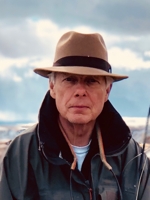
American Toad
by James Johnson
Jim paddles the lakes and rivers of the Souris Red Rainy Watershed in the summer and walks the streams of the Driftless Area of the Upper Mississippi in the spring and fall. His grandparents homesteaded on Whitebird Creek, tributary of the Stillwater River, tributary of the Yellowstone.

Contrary to popular opinion, the American
toad does not have an American flag
stitched to its back like Peter Fonda in
Easy Rider. In fact the last American toad
I have seen was green, dark green, Forest
Service green, the same green as my pump,
so green I only happened to notice the
slight bulge on the snout of the pump was
a hunkered down toad. When I picked it
up, I noticed its belly was desert camouflage
as if ready for assignment to aid the oil-
bearing oppressed. I, however, placed the
toad back on the pump. No call-up today.
Instead, I salute the green, the unnoticed
Easy Rider at home on my pump. Peace, man.
© James Johnson

Expatriation
by Teri Micco
Teri lives among the junipers, piñons, cholla and ravens in the high desert lands underneath the talkative skies of northern New Mexico in the Galisteo watershed.

Perishing
from thirst encrusted betrayal,
The trees are migrating —
the word spreading like twilight
through the flickering synapses
of their faltering roots.
One subterranean song.
One skylit heart — incalculable —
swallowing unfamiliar stars
and drinking the hushed,
yet beckoning, moon.
My constellation ending now
where theirs begins —
our souls still breathing
ineluctably
as one.
© Teri Micco